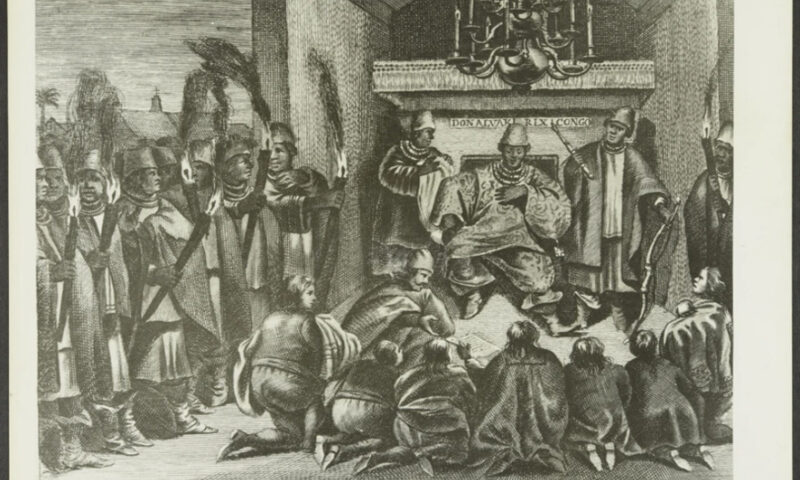By Spy Uganda
One of the oldest and best-documented African kingdoms is that of Kongo. According to historians, the territory of the kingdom at its peak stretched from what is now Angola, the Democratic Republic of the Congo. The locals’ version of events, however, encompasses all of modern-day Gabon, Namibia, and even Zambia.
The cultural parallels between the countries involved tend to back up this claim. It is believed that the kingdom was formed from the disintegration of an ancient kingdom called Bangu, found on the north bank of the Congo River.
As indicated earlier, the Kingdom of Kongo is arguably one of the largest kingdoms on the African continent yet its expansion was not a result of military conquests. The kingdom didn’t have an army and mercenaries but royal guards who protected the court.

The kingdom grew by persuading neighboring states to join it. As long as they promised to abide by the rules, other kingdoms were welcome to join the Kongo Kingdom and become provinces. They could also withdraw from the monarchy without interference.
Also, intermarriages among the people contributed to this expansion. Per oral traditions, in 1390 C.E., Nima a Nzima of the Mpemba Kasi married Luqueni Luansanze of the Mbata in a political marriage that sealed the union between the two KiKongo-speaking peoples and led to the establishment of the Kingdom. In the middle of the 1600s, the kingdom’s might peaked.

With a population of over 2 million, the kingdom of Kongo benefited greatly from the exchange of ivory, copper, salt, cattle hides, and slaves. The kingdom’s weavers, who made the renowned Kongo raffia fabrics, potters, and metalworkers, did not only import goods but also produced their own.
The Kongo kingdom was highly centralized, with a single monarch known as the nkani selecting regional governors across his domain. These governors in turn nominated regional leaders and procured tribute from regional chiefs, including ivory, millet, palm wine, leopard and lion skins, which they then delivered to the monarch at Mbanza Kongo, the capital of the Kongo.
Governance
There was no line of succession to the throne among the Bakongo, therefore any Mukongo (a citizen of the Kongo kingdom) may run for and be elected king. There were a total of 12 provinces in the kingdom, each of which was led by a governor appointed by the monarch. The provinces were Soyo, Ngoyo, Kakono, Loango, Mpumbu, Matamba, Ndongo, Nsundi, Mbamba, Mpemba, Mpangu, and Mbata.
The kingdom provided positions to each of the 12 finalists for the throne. All twelve nominees were promised a noble title, including Mani—a term for a monarch or other person in a position of authority— or Ne.
“The title Mani or Ne was either followed by the name of the candidate’s district, province, or function for those who held positions in the royal court. For instance, Ne Mampandu was the Ne of Mampandu,” Bayeck writes.
Decline of Kongo Kingdom
Around the sixteenth century CE, the Portuguese, frustrated by Kongo’s trade laws, shifted their focus south to the region of Ndongo, hastening the decline of the kingdom. Ndongo’s army had already defeated Kongo’s in 1556 CE, the platform added. Also, popular unrest was brewing against the Kongo rulers as the populace hated the fact that they were being taxed so much by an aristocracy eager to purchase imported luxury items.
What’s more, as the number of European traders in the region grew, particularly after the arrival of the Dutch in the early 17th century, it became problematic for the king to maintain the loyalty of the regional governors, leading to Kongo’s drastic power decline.









